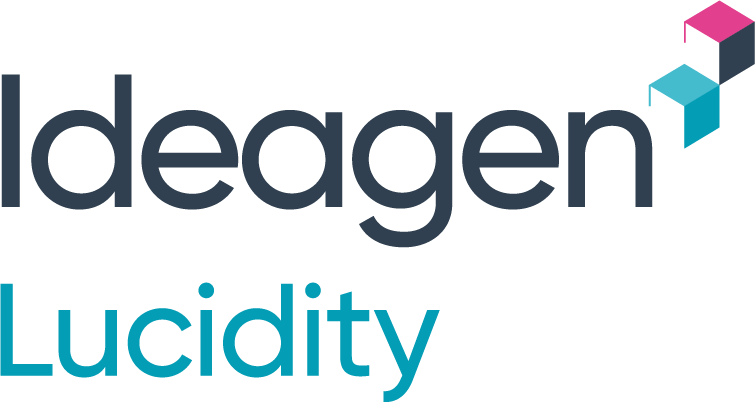SWMS
Safety Work Method Statement
What is a Safe Work Method Statement (SWMS)?
A Safe Work Method Statement (SWMS) is a safety planning document that must be developed for work that is considered high-risk construction work and that outlines the necessary steps and precautions for completing a job safely.
Its purpose is to identify potential risks and provide clear directions for managing or reducing them, ensuring the safety of workers and others involved.
The content of a SWMS will outline hazards, risks, and safety controls that must be implemented for high-risk work, making it a valuable tool for safe systems planning and implementation. They may vary based on the job's nature and complexity but will typically include equipment and material requirements, worker roles and responsibilities, and emergency procedures. To ensure safety, each SWMS must be sites specific, and once created, it has to be shared with all relevant parties, including workers and supervisors.
What is the difference between a SWMS, JSA, SSSP
A SWMS is not intended to be a procedure—rather, it is a tool to help supervisors and workers confirm and monitor the control measures required in a high-risk work environment.
Safe Work Method Statement (SWMS), Job Safety Analysis (JSA), and Site Safety and Health Plan (SSHP) are all important tools for promoting workplace health and safety. However, each one serves a slightly different purpose and has a different focus:
Safe Work Method Statement (SWMS): A SWMS is a document that outlines the hazards, risks and control measures associated with a specific task or job. It provides a step-by-step guide for performing the task safely and is used to ensure that workers are aware of the potential hazards and the measures that must be taken to manage those hazards.
Job Safety Analysis (JSA): A JSA is a systematic examination of a job or task to identify potential hazards and to determine the measures that are necessary to eliminate or control those hazards. The focus of a JSA is on the identification and assessment of hazards, and it provides a basis for developing a SWMS.
Site Safety and Health Plan (SSHP): A SSHP is a comprehensive plan that outlines the safety and health policies, procedures, and practices that will be followed at a worksite. The focus of a SSHP is on the overall management of health and safety at a site, and it provides a framework for implementing and enforcing safety policies and procedures.
Each of these tools plays an important role in promoting workplace health and safety, and they are often used in combination to ensure that the hazards associated with a job or task are properly identified, assessed, and controlled. The specific requirements for each tool can vary depending on the jurisdiction in which you are operating, so it is important to check the local regulations in your area to determine the requirements that apply to your work.
What is the purpose of a SWMS?
The SWMS is a crucial tool that promotes workplace health and safety. It ensures that workers are aware of potential hazards associated with a task and that appropriate control measures are in place to manage those hazards. This helps to reduce the risk of incidents, injuries, and illnesses in the workplace.
A Safe Work Method Statement (SWMS) also assists with the following:
- Identify potential hazards associated with a task or job
- Assess the risks associated with those hazards
- Put in place control measures to manage and reduce the risks
- Provide clear instructions and procedures for safely performing the task
- Ensure that workers are aware of the hazards, risks and control measures associated with the task
- Provide a reference document that can be used to train workers and monitor the safe execution of the task
Benefits of doing a SWMS
Safe Work Method Statements (SWMS) play an essential role in workers fully understanding the risks involved with the work they are carrying out and the controls that are in place to keep them safe. Here are other benefits of doing SWMS:
improved safety
By outlining the steps that must be taken to perform a task safely, a SWMS helps to reduce the risk of accidents and incidents in the workplace. This can help protect workers and ensure that they can perform their jobs safely.
compliance
In many jurisdictions, using SWMS is a legal requirement for certain types of high-risk work, such as construction, manufacturing, and mining. By using a SWMS, organisations can demonstrate compliance with workplace health and safety regulations and can help to reduce the risk of legal liabilities and penalties.
Improved Risk management
By identifying and assessing the hazards and risks associated with a task, a SWMS provides a basis for developing effective risk management strategies. This can help organisations prioritise safety and allocate resources more effectively to manage health and safety risks.
better training
An SWMS can be used as a training tool to help workers understand the steps that must be taken to perform a task safely. This can help ensure that workers are adequately trained and have the knowledge and skills to perform their jobs safely.
Better communication
A SWMS provides a clear and concise guide for performing a task, which can help to improve communication between workers and their supervisors. Workers are better informed about the hazards and risks associated with a job and better equipped to identify and manage those hazards.
When do I have to complete a SWMS?
Safe Work Method Statements (SWMS) requirements vary by jurisdiction. Some countries legally mandate them for high-risk industries like construction and mining.
For example, in Australia, the use of SWMS is a requirement under occupational health and safety legislation in most states and territories; they are required by law to be prepared, reviewed, and kept on-site whenever high-risk construction work is carried out. High Risk construction work includes when work is carried out in or near a confined space or involves a risk of a person falling more than 2 m.
Regulations differ by state, so it's important to check local requirements. While not mandatory in some countries, SWMS are still recommended in high-risk industries to ensure compliance and minimise workplace incidents.
Who should prepare a SWMS?
In order to implement SWMS effectively, Health and Safety Team members or representatives play a critical role. They have valuable insights into potential workplace hazards that managers and workers may overlook.
To create a SWMS for high-risk construction work, the most qualified person responsible for conducting the work should develop it, with input from the workers involved.
All staff members, including managers, contractors, leading hands, and workers, should participate in the creation of the SWMS. This is important to ensure that everyone understands the specifics of the SWMS and what they need to do to adhere to and maintain risk management protocols.
Sharing information and leveraging worker expertise and experience will help ensure that the work is done in accordance with the SWMS.
It's key that the SWMS is short and focused, and important to remember that if the work is not being carried out in accordance with the SWMS: the work must stop immediately or as soon as it is safe to do so. Work must not resume until the work can be carried out in accordance with the SWMS.
Examples of Commonly Used SWMS
Excavation work SWMS: This typically outlines the hazards and risks associated with excavation work, such as the risk of collapse or cave-ins, and provides control measures to manage these risks, such as the use of trench boxes or shoring.
Scaffolding work SWMS: Again, it outlines the hazards and risks associated with scaffolding work, such as the risk of falls, and provides control measures to manage these risks, such as the use of fall protection systems or guardrails.
Confined space entry SWMS: This type of SWMS outlines the hazards and risks associated with entering confined spaces, such as the risk of asphyxiation or explosion, and provides control measures to manage these risks, such as the use of gas monitoring equipment or ventilation systems.
Working at heights SWMS: Outlines the hazards and risks associated with working at heights, such as the risk of falls, and provides control measures to manage these risks, such as the use of fall protection systems or scaffolding.
Asbestos removal SWMS: Outlines the hazards and risks associated with asbestos removal, such as the risk of exposure to asbestos fibres, and provides control measures to manage these risks, such as the use of personal protective equipment and decontamination procedures.
Ready to see how Lucidity can help you?
Experience the software for yourself with a personalised demo tailored to your organisation's specific health and safety needs.


